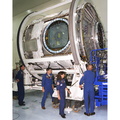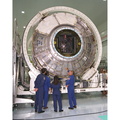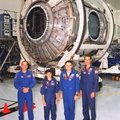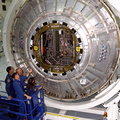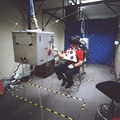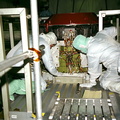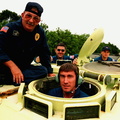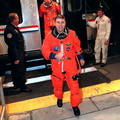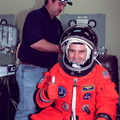
WIKIARCHIVES.SPACE
The Human Spaceflight Archive

Information
- Taken in
- Kennedy Space Center
- Author
- NASA
- Description
- Clad in their blue flight suits, STS-88 Mission Specialists (from left) Sergei Krikalev, a cosmonaut from Russia; Jerry L. Ross; and James H. Newman examine equipment from a toolbox that will be on the Space Shuttle Endeavour during their flight. Talking to Ross is Wayne Wedlake of United Space Alliance at Johnson Space Center, while Henry Thacker (facing camera), of Flight Crew Systems at KSC, looks on. Launch of mission STS-88 is targeted for Dec. 3, 1998. The STS-88 crew members are participating in a Crew Equipment Interface Test (CEIT) in the Orbiter Processing Facility Bay 1 to familiarize themselves with the orbiter's midbody and crew compartments. STS-88 will be the first Space Shuttle launch for assembly of the International Space Station (ISS). The primary payload is the Unity connecting module which will be mated to the Russian-built Zarya control module, expected to be already on orbit after a November launch from Russia. The first major U.S.-built component of ISS, Unity will serve as a connecting passageway to living and working areas of the space station. Unity has two attached pressurized mating adapters (PMAs) and one stowage rack installed inside. PMA-1 provides the permanent connection point between Unity and Zarya; PMA-2 will serve as a Space Shuttle docking port. Zarya is a self-supporting active vehicle, providing propulsive control capability and power during the early assembly stages. It also has fuel storage capability.
- Created on
- Saturday 3 October 1998
- Source link
- https://science.ksc.nasa.gov/gallery/photos/1998/captions/KSC-98PC-1215.html
- Visits
- 65
- Rating score
- no rate
- Rate this photo
- License
- CC BY-NC
- Modified by WikiArchives
- No (original)
- Downloads
- 0
Powered by Piwigo









